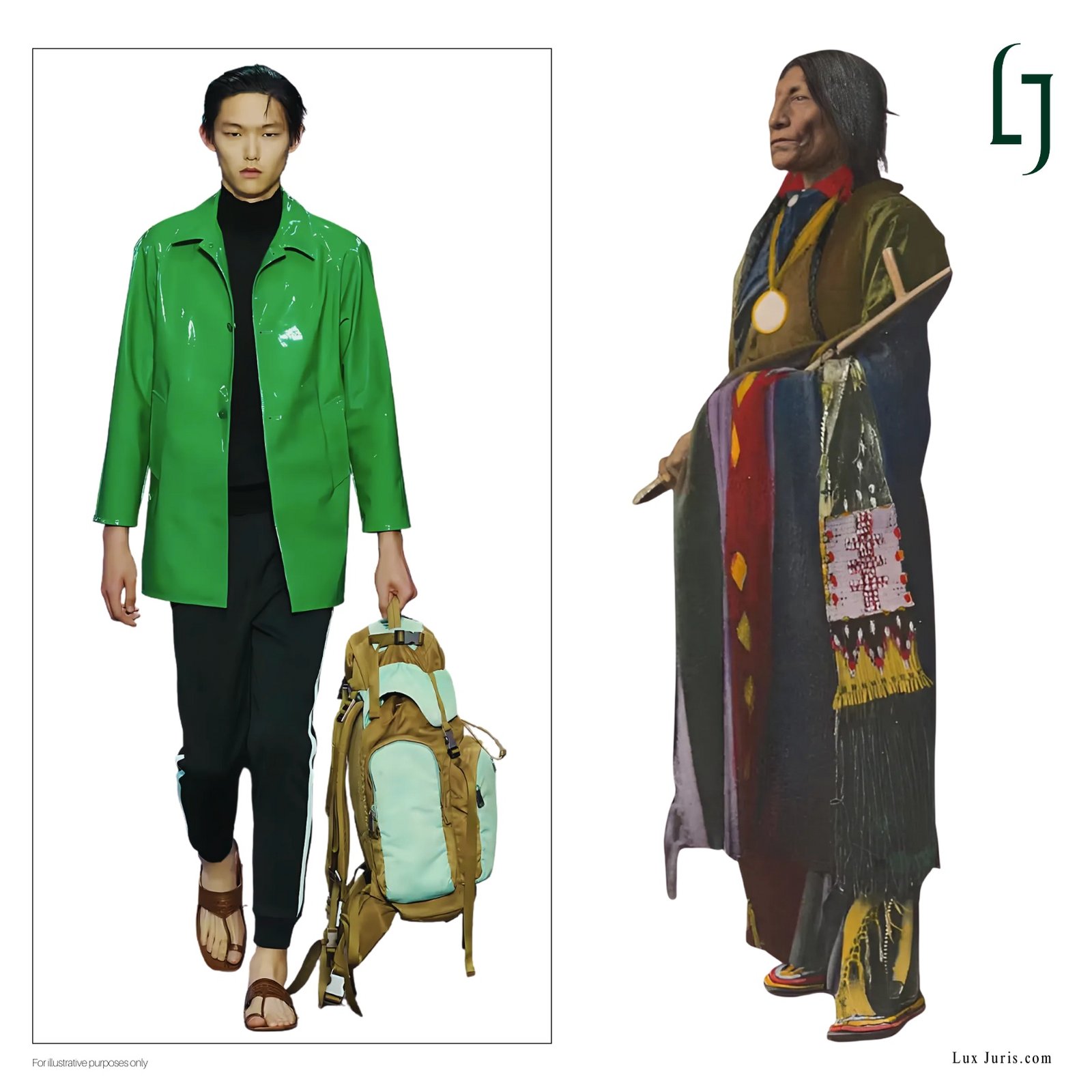Why Fashion Law Struggles to Address Cultural Appropriation
When a global fashion house unveils a design on the runway, few inside the industry stop to ask where it came from, who first shaped it, or whether permission ever figured in its making. Some forms are celebrated as fresh creative work, while others are quietly lifted, renamed, and sold to new markets under the glow of originality. Behind many of these shapes and styles lie communities, histories, and craft traditions that remain uncredited and unprotected, even as they continue to inspire collections that travel far beyond the places where they began.
This article examines how cultural appropriation persists through the gaps that remain in fashion law. In most jurisdictions, the legal system offers limited recognition to collective authorship, traditional design, or cultural origin unless these have already been formalised as property. What follows is not a series of isolated incidents but a consistent pattern in which attribution is removed, communities are excluded, and commercial benefit flows elsewhere.
The silence is not accidental. It is embedded in the structure. And it continues to function exactly as it was intended to.
When Prada Showed the Kolhapuri Without Saying So
When Prada debuted its Spring/Summer 2026 collection, one sandal stood out, not because it was new, but because it wasn’t. Its flat leather sole, distinctive toe-loop, and minimal straps were instantly familiar to many Indian viewers. The form belonged to the Kolhapuri chappal (sandal), yet no visible mention of its name or source appeared.
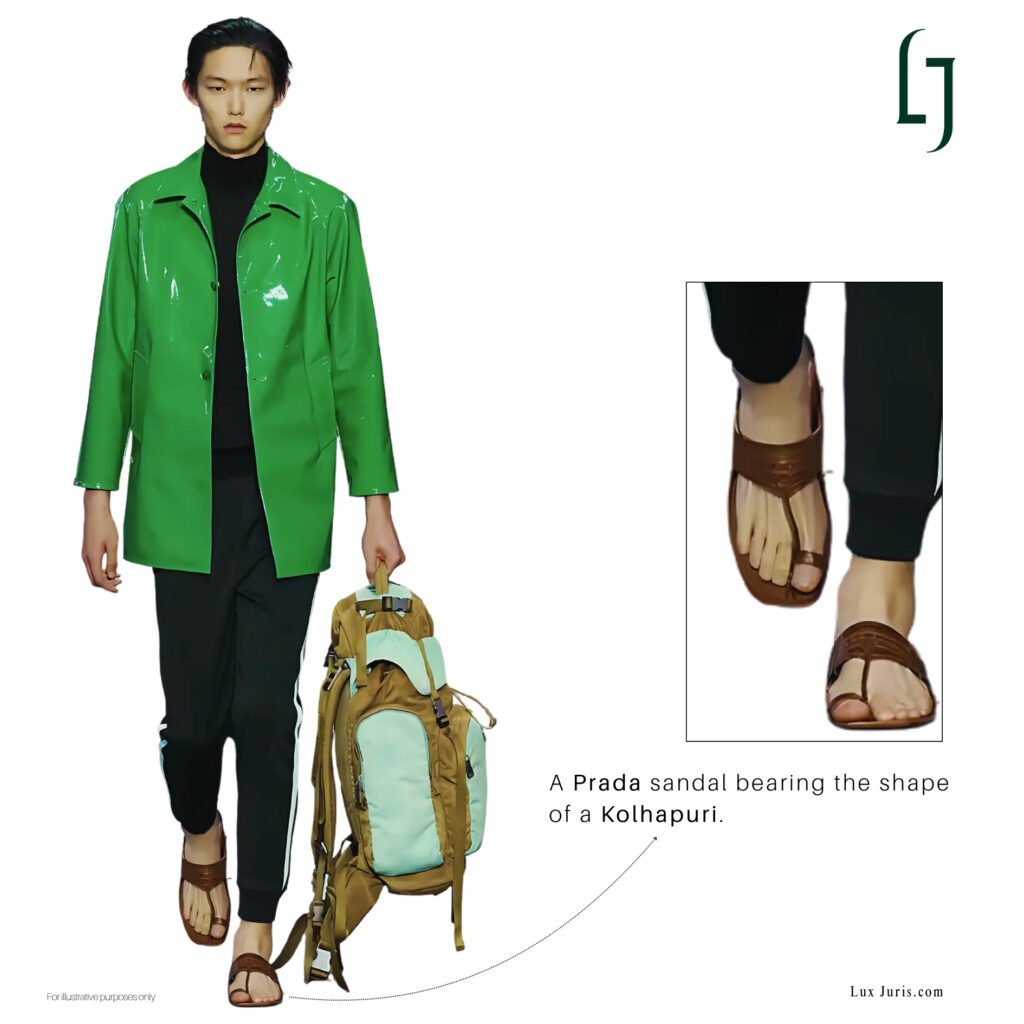
Few realise that Kolhapuri chappals are more than simple sandals. They carry a documented craft lineage, are tied to specific regions, and hold formal legal recognition within India. In 2019, they were granted Geographical Indication (GI) status by the Indian government, which restricts use of the name to designated districts in Maharashtra and Karnataka. This GI acknowledges the connection between product, process, and place. Yet while the name, craft, and origin are legally defined domestically, there is no guaranteed equivalent protection abroad.
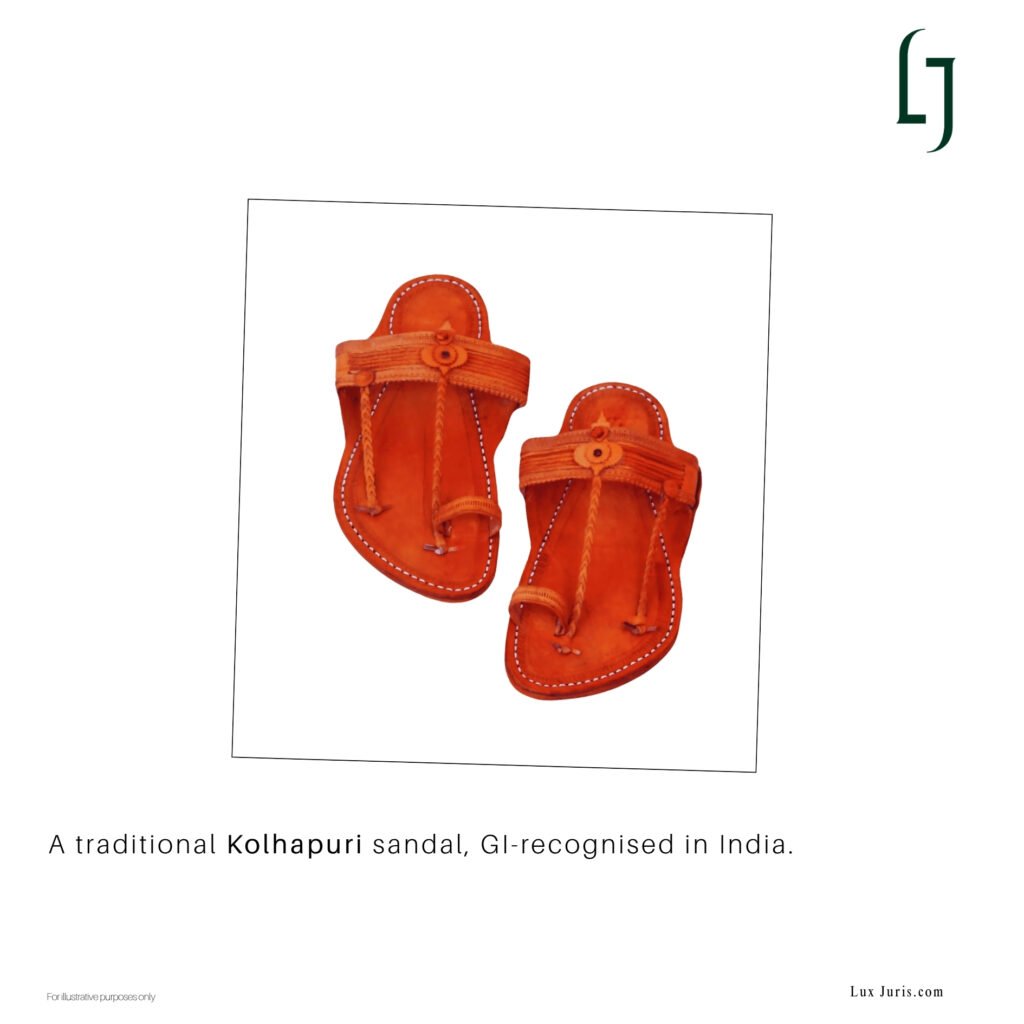
What Prada offered was not a reinterpretation but a near replication, stripped of the name, the context, and the community that gave the sandal its meaning. The silhouette stayed, yet the recognition vanished, and for the artisans still making Kolhapuris, what appeared on the runway was never homage but erasure.
Dior’s Escaramuza, Community Not Included
In 2018, Dior released a cruise collection inspired by escaramuza riders, Mexican women known for their equestrian skill and traditional dress. The campaign featured tailored silhouettes, elaborate lacework, and romantic imagery, all repackaged under a narrative of female empowerment.
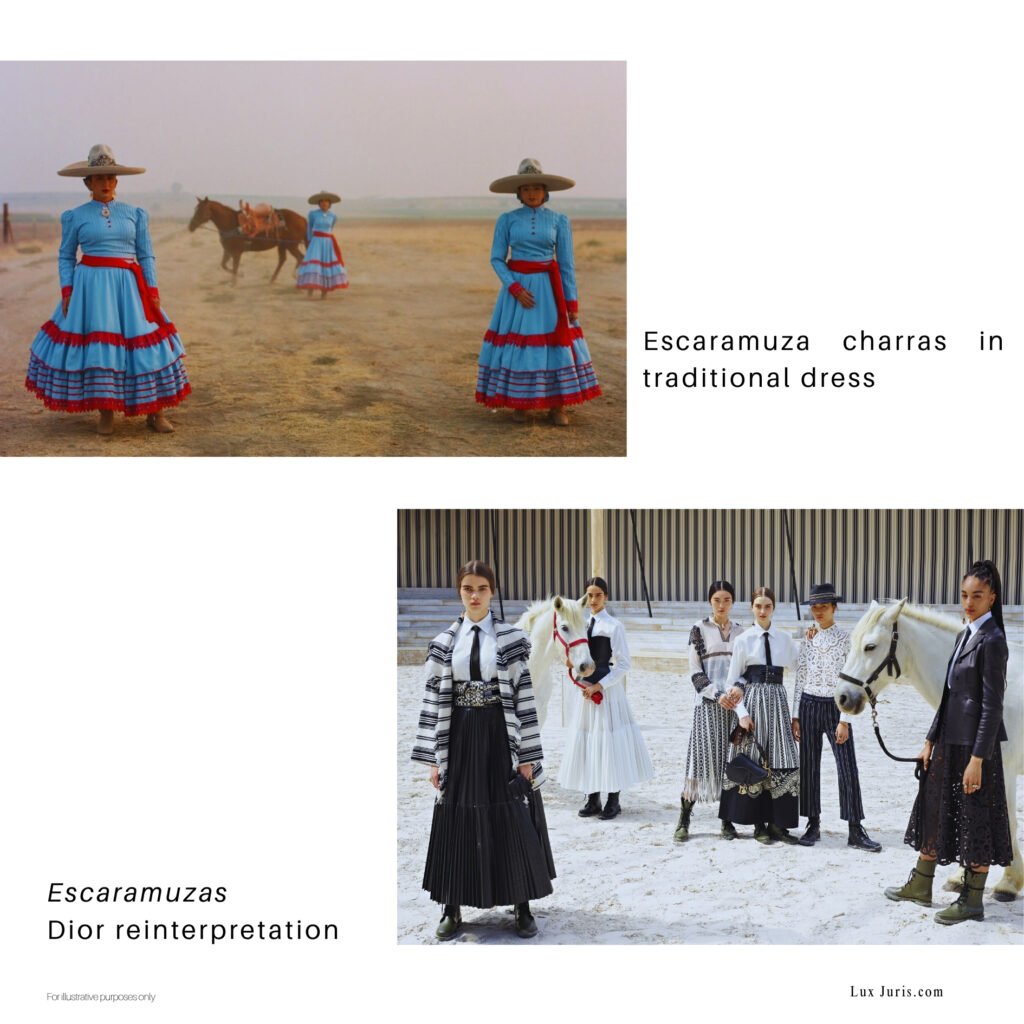
The riders themselves were not involved. The community was not credited. There was no agreement, no collaboration, and no share in the commercial outcome. When Dior’s creative director responded to criticism, she described the collection as a cultural bridge, referencing visual similarities between Southern Europe and Mexico.
But the problem was never just about similarity. It was about scale and reach. Dior had the platform, the media attention, the resources, and the market access to repackage the form for a global audience, while the community that inspired it held only the reference point from which the design came. The result was inevitable. The brand used a cultural form to strengthen its own identity, while the orginal source was pushed quietly into the background.
The Huipil Was Copied and the Court Did Not Compensate
In 2015, Isabel Marant released a blouse that closely mirrored the huipil worn by the Mixe community in Oaxaca. Its patterns, structure, and colour-work were not offered as inspiration but lifted as direct replication. Marketed as bohemian fashion, the blouse reached a global customer base without attribution and was priced far above the garment it had borrowed from.
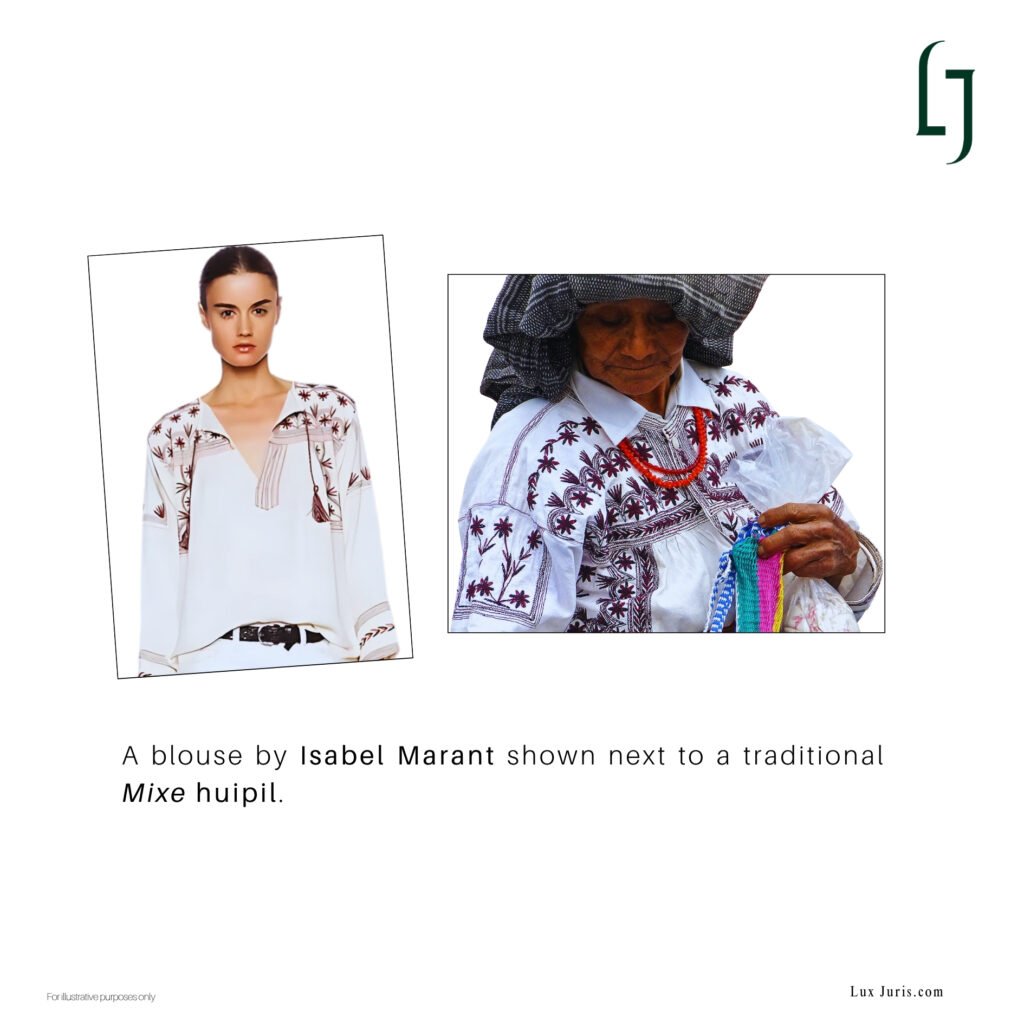
The Mixe protested
The government of Oaxaca issued a formal complaint, but Marant remained silent until an unrelated dispute in France pushed the matter into court. Under legal pressure, Marant finally conceded that the design was not original. The court recognised the Mixe as the original source, yet that recognition did not amount to justice. There was no payment, no rights granted, and no remedy beyond the blouse being withdrawn. In the end, the matter simply closed.
The Navajo Had a Trademark and Still Had to Fight
In 2012, the Navajo Nation sued Urban Outfitters for selling products under the name “Navajo,” a mark the tribe had officially registered and used in commerce. These included underwear and flasks adorned with Native‑inspired motifs, none of which were made by or connected to the Navajo Nation. The use was unauthorised and misleading, as consumers could reasonably infer an affiliation that did not exist.
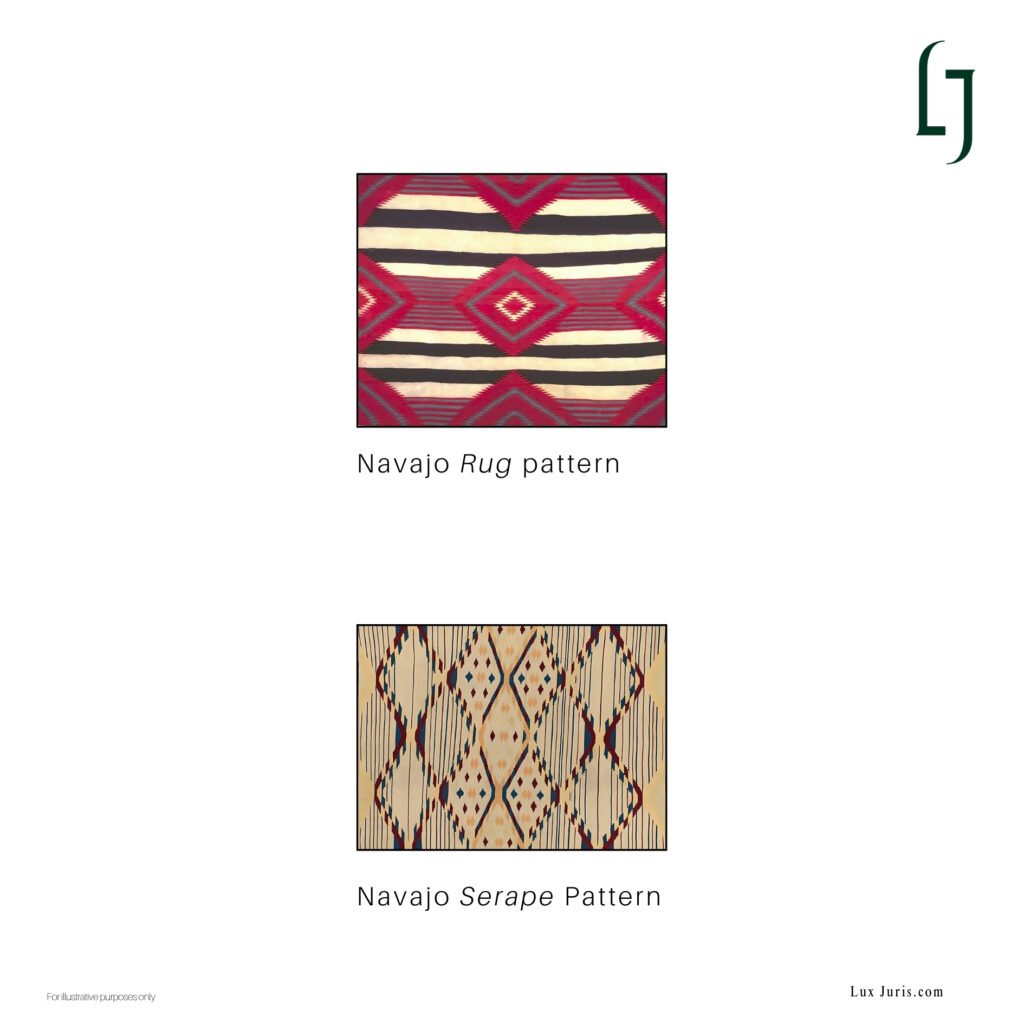
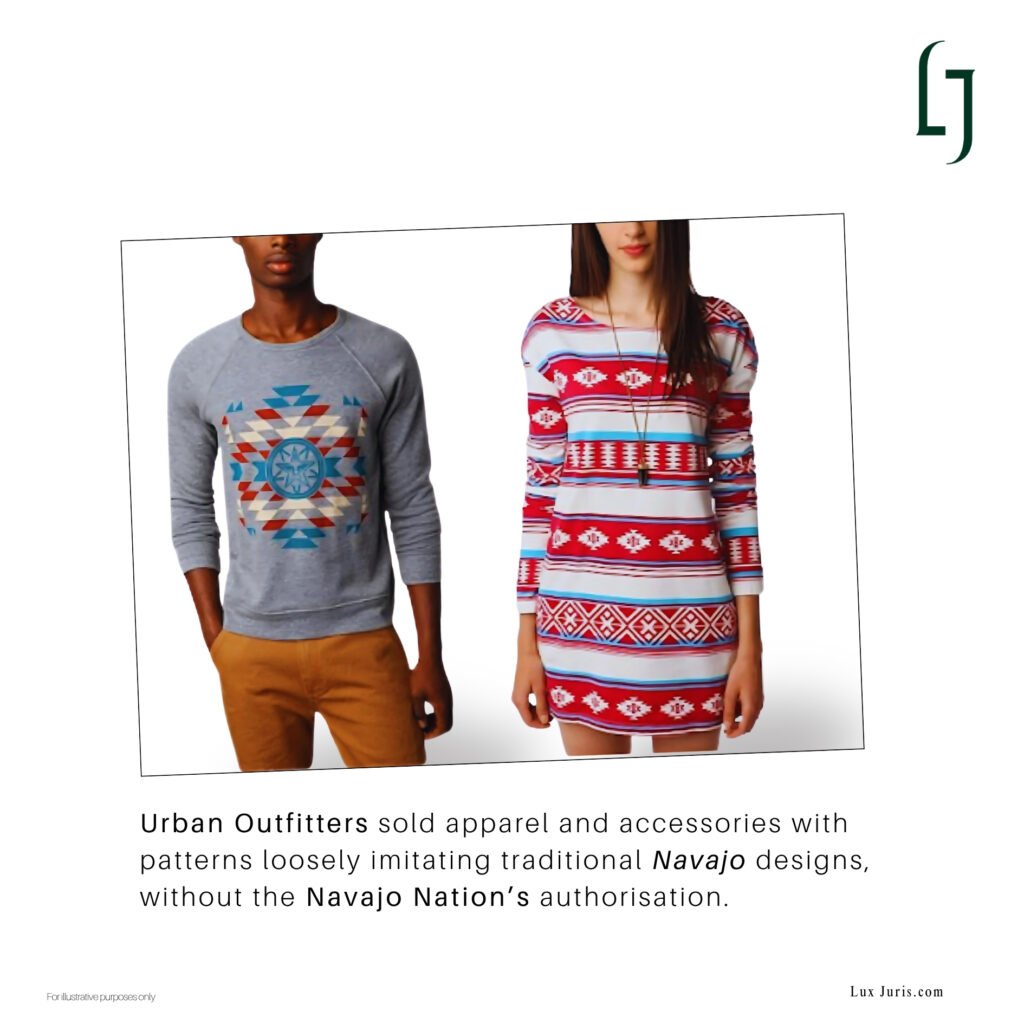
The case ended in a settlement. But the only reason the claim stood at all was because the Navajo Nation had already done the work of turning cultural identity into registered property. Most communities have not. They may hold heritage, but not trademarks. And without formal registration and proof of commercial use, there is no standing to object.
The Law Protects What It Has Already Defined
Copyright protects works that are original and individually authored, but designs that have evolved through generations of collective practice fall outside that scope. Even when such designs remain active, recognisable, and commercially valuable, they are still treated as part of the public domain.
Trademark law offers some protection, but only when a name, symbol, or identifiable element has been formally registered and used in commerce. The law protects what has been enclosed as a brand, but it does not step in for cultural identity that sits outside formal market systems.
The public domain is often described as neutral. In reality, it favours those with the resources to extract and profit from it. Fashion houses can lift motifs and silhouettes with minimal risk. Communities whose identities are borrowed often have no legal means to contest the use.
Some countries, such as Italy, impose heritage protections that restrict unauthorised commercial use of cultural forms, even without copyright or trademark. But these remain rare. In most jurisdictions, if a design has not been registered, it is treated as free.
Consent Was Never Part of the Process
Designers often present cultural borrowing as an act of creative admiration, yet admiration offered without consent cannot be called collaboration and remains, at its core, extraction, because the line between cultural exchange and cultural appropriation always begins with a single question of whether the community had the power to say no.
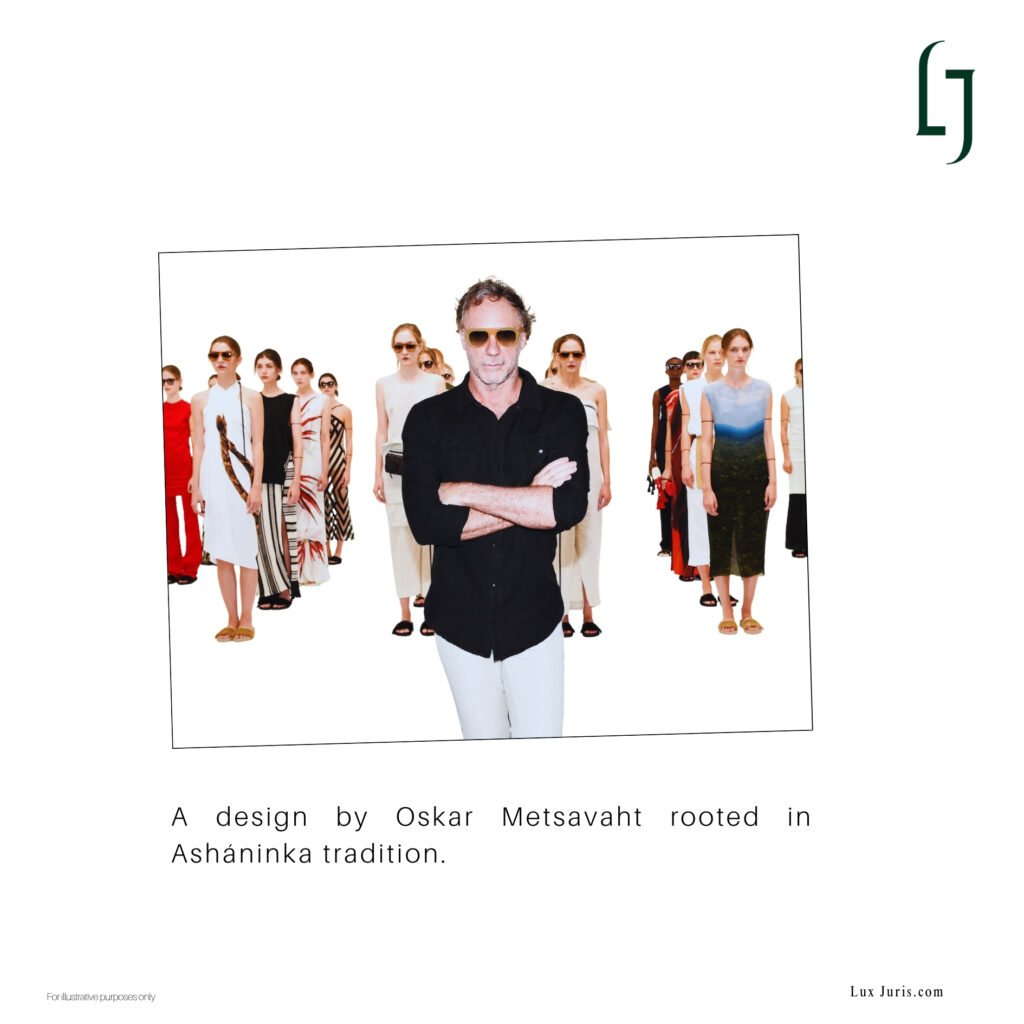
Brazilian designer Oskar Metsavaht showed what a different approach could look like. Before using the patterns of the Asháninka tribe, he asked for permission. He paid fifty thousand dollars, funded a school, and helped the community develop their own commercial outlet. There was no protest. The relationship was defined in advance. The terms were set by both sides.
Guidelines Cannot Fix What the System Enables
International organisations such as WIPO have spent years developing frameworks to protect traditional cultural expressions. But these frameworks are slow, non-binding, and unlikely to reshape industry practices in the near term. In the meantime, brands continue to enjoy expansive protection for their own marks and trade dress, while remaining free to borrow cultural design forms with impunity.
Ethical guidelines have become commonplace in fashion. They speak the language of responsibility but remain unenforceable. They rely on internal policies shaped by institutions that benefit from the same cultural systems they claim to moderate. Prada’s Code of Ethics, for instance, describes its bond with culture as part of its corporate identity and promises to preserve artisanal knowledge and craft (Code of Ethics, Section 6), yet these commitments are defined and monitored internally. In practice, this rarely sets real limits on cultural appropriation. The system continues to protect what it has already recognised, while overlooking what it was never built to include.
The Structure Was Built to Look Away
The fashion industry continues to draw from traditions that the law was never structured to recognise. Existing frameworks protect what is formally documented, individually authored, and registered under identifiable ownership, but they offer far less to what is inherited, community-based, or passed down through generations without formal recognition.
This gap is not incidental but reflects how ownership and authorship have historically been defined. Designers who document and formalise their work are granted protection, while communities whose traditions are used as reference points may be acknowledged yet rarely have the means to shape or contest how their heritage is used.
Recognition of cultural origin and the need for proper attribution has increased, but the underlying legal framework remains largely unchanged. Most laws still protect what is individually owned and registered. Traditions and community based work rarely fit these conditions. Unless the law provides clear protection for collective cultural authorship, communities have few ways to claim credit or control how their heritage is used.
Sources:
1. Cultural Appropriation and the Global Fashion Industry
Images courtesy:
whitewall.art/fashion/osklen-bringing-ashaninka-to-nyfw/
larevistamujer.com/christian-dior-question-tulle/
independent-photo.com/news/escaramuza-the-poetics-of-home/
vogue.es/moda/news/articulos/dior-desfile-crucero-2019-charreada-escaramuzas-mexicanas/35066
